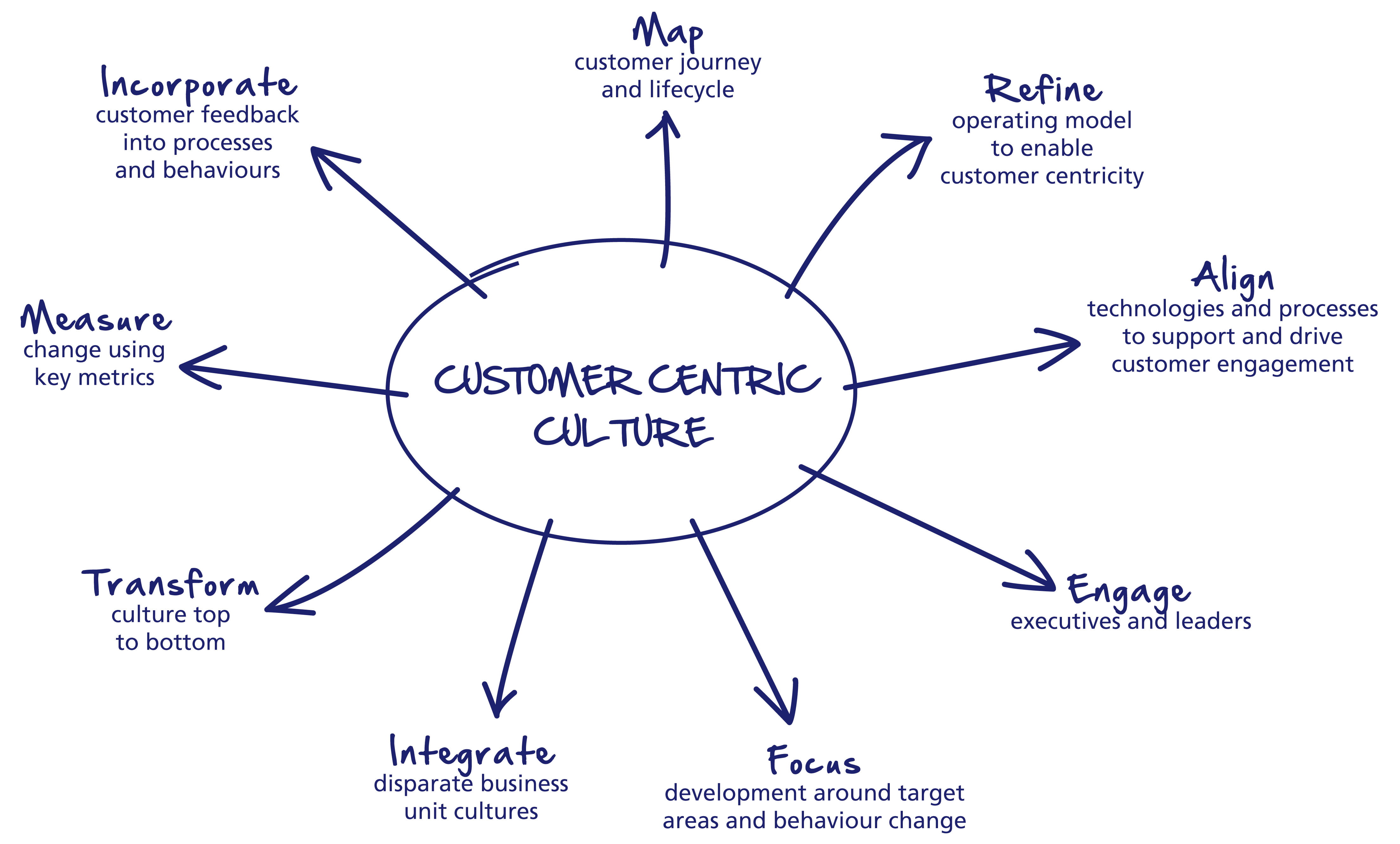Creating a positive consumer experience at the point of sale and post-sale.
A customer-centric approach can add value to a company by enabling it to differentiate itself from competitors who do not offer the same experience.
Does the business you are involved in fall into the category? Well, these are the indicators: –
A customer-centric approach can add value to a company by enabling it to differentiate itself from competitors who do not offer the same experience.
Does the business you are involved in fall into the category? Well, these are the indicators: –
- Puts customers above everything else.
- Enhances the buyers experience, promotes sales and works to ensure customer loyalty, above all.

Here’s my list of seven steps for creating a customer-centric culture at your company.
These figure in my work as a company culture consultant; I’ve found them to be central to creating a corporate customer service culture that’s devoted from top to bottom to the customer experience. I am recapping the list here at the request of a MarketHive reader; I hope you find it useful.
1. Articulate your central philosophy in just a few words, a few meaningful words. That’s right: a company’s culture can begin with words, but those words need to represent a decision — something you actually stand for, a decision then expressed in the clearest, and ideally fewest, words. Find a central operating principle. Think of the Ritz-Carlton’s“We are Ladies and Gentlemen serving Ladies and Gentlemen,” or Mayo Clinic’s “The needs of the patient come first.”
2. Elaborate on your central philosophy with a brief list of core values – a list short enough that every employee can understand, memorize, and internalize it, yet long enough to be meaningful. Your core values should cover how customers, employees, and vendors should be treated at all times.
3. Reinforce your commitment to these values continually. You may want to go as far as to devote five minutes every morning you stress one value, or an aspect of one value, at your departmental meeting. If that’s too often for your business reality or sensibilities, do it weekly. But don’t save it for the annual company picnic. Annual anything is the enemy of ‘‘core.’’
4. Make it visual. The above-mentioned Ritz-Carlton has ‘‘credo cards’’ — laminated accordion-fold cards that each employee carries during work hours. The brand’s entire core beliefs, plus shared basics of guest and employee interactions, fit on that card. Zappos highlights one of its core values on each box it ships out. And sometimes ‘‘visual’’ doesn’t mean words at all. One way that FedEx shows that safety is a core value is via the orange shoulder belts in its vans: Everyone can see — from twenty-five yards away — that the driver’s wearing a belt.
5. Make your philosophy the focus of orientation. That way, if safety is one of your core values and you stress this at orientation, on day two, when the new employee’s co-worker tells him ‘‘In this restaurant, we stack the high chairs in front of the emergency exit when we need more room to do our prep work’’ [This is a real-life example, unfortunately], the new employee will experience cognitive dissonance and work on a way to align the actions of the company with the core values they’re supposed to reflect.
6. Train, support, hire, and, if necessary, use discipline to enforce what’s important to you. A core values statement is two-dimensional until you bring it to life — with the right people and energetic guidance. ‘‘Maintaining a culture is like raising a teenager,’’ says Ray Davis, President and CEO of Umpqua Bank, a the Pacific-Northwest-based U.S. retail bank that’s consistently top rated for service. ‘‘You’re constantly checking in. What are you doing? Where are you going? Who are you hanging out with?’’ And, sometimes, you have to use some tough love when that teenager is acting up in ways that don’t support the culture you’re working to build.
7. Include the wider world. Your people want to be part of an organization with a sense of purpose. Pizza parties and overtime pay (and even, believe it or not, stock options) only go so far. More inspirational: A version of a corporate “triple bottom line,” such as Southwest’s “Performance — People — Planet” commitment and annual report card. Or Ritz-Carlton’s “Community Footprints” social and environmental responsibility program. Or the story Umpqua Bank Regional VP Michele Livingston shared with me, about her employees visiting the homes of disabled customers to help them fill out their paperwork. Now that’s really something.
Steven Hodgkiss
Free Inbound Marketing Tools from MarketHive
See MarketHive for more information and to register.
Al Zibluk
